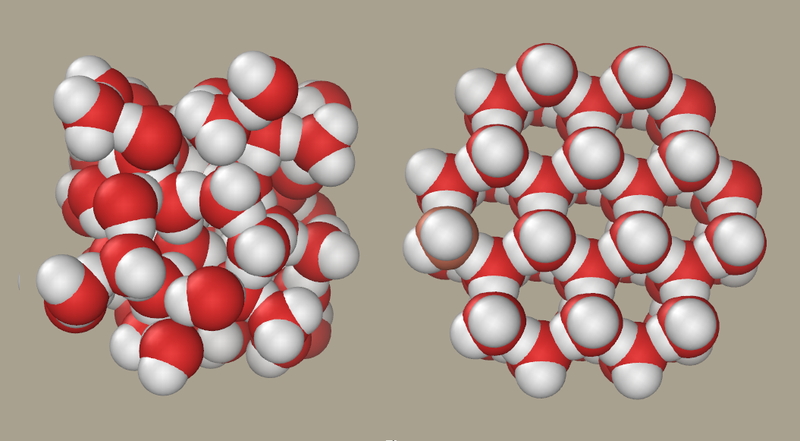
Intro to reactions in solution
Reactions in solution 1
We are going to be looking at reactions in aqueous solutions (in water). The reason for this is that in order for a reaction to occur, the atoms, molecules and ions have to be able to interact with each other. They can do this if they are in either liquid or gaseous phase, but it is harder for this to happen if the compounds in question are in solid phase. While you can have solutions of solids, liquids or gases, but we will speak almost entirely on liquids. By convention, we call the thing that is present in greater concentration the "solvent" (this is the thing doing the dissolving) and the thing that is dissolved in it is called the "solute" (this is the thing dissolved).
BTW, here are the pages from the white board…actually written last year.
Electrolytes:
The definition is functional: a solution that conducts electricity. In practice, this means that there are ions in solution, as opposed to molecules, since it is the presence of positive and negative ions that allows conductivity. Any electrolyte must involve some ions separating from each other. If a compound produces a lot of ions in solutions, such as when an ionic compound like NaCl dissolves, it is a strong electrolyte. Things that ionize only a little, like weak acids, will be weak conductors. Weak electrolytes, weak acids and weak conductors should be linked in your mind. A strong acid results in a low pH and will be good a conductor. Strong and weak bases will be analogous.
Solutions of ionic compounds in water are not "molecules" in solution, but were rather the separate ions of the compound. If an ionic compound dissolves, it does so by separating into its component ions which are "hydrated," or surrounded by water molecules. The partially negative oxygen crowds around the positive ion and the partially positive Hydrogens crowds around the negative ion. Solubility implies that the condition of hydration is lower-energy for that compound than the crystal. If the bonds between the ions is too strong, the compound will not be soluble, because the water cannot break the bonds.
What types of reactions can we follow?
There are a few we will consider:
- Precipitation reactions: In these, two solutions of ions are mixed. When the cation of one compound interacts with the anion of the other, the bonds of this new compound are too strong for the water to keep in solution, and the new solid precipitates.
- Acid-base reactions: in these, you mix the acid and base, which will result in a solution of intermediate pH. The product of these is generally water and some soluble salt.
- Oxidation/reduction reactions. These involve the trading of electrons, and are most notable in that they are the underlying chemistry of batteries and you.
Precipitation reactions:
When we write out what's actually in solution, we see that it is the ions. An ionic compound is soluble when it's interaction with water, which we call "hydration," is stronger than the interactions with the other ion in the crystal. So, Na+ and Cl- bond to each other. But, if we put them in solution, not only do they get to move more freely (a net gain for the entropy of the universe, but also form bonds with the water. Overall, the reaction is very slightly endothermic, so the bonds with water represent about the same amount of energy as bonds in the crystal.What would happen if an chloride ion was swimming around in the solution and bumped into a different cation, say Ag+ (silver). It turns out that Cl- bonds to Ag+ with much stronger bonds (lower energy) than it does with Na+.
The result is that AgCl precipitates from solution as a solid. We cleverly call this a "precipitation reaction."
How do you know what precipitates and what does not? Here is a link to the solubility chart we use. You can also find it on the back of your periodic table.
Okay, so some memorization may be necessary here. Wikipedia also has a good chart. But, let's try to keep memorization to a minimum. Also, you will do some experiments that address this. You will look at solubility of various compounds, and find, for example, that all the salts of alkali metals are easily soluble. Also, that salts of the metals in the alkaline earth column are less soluble, but BaCl2 for example, is more soluble than CaCl2.
